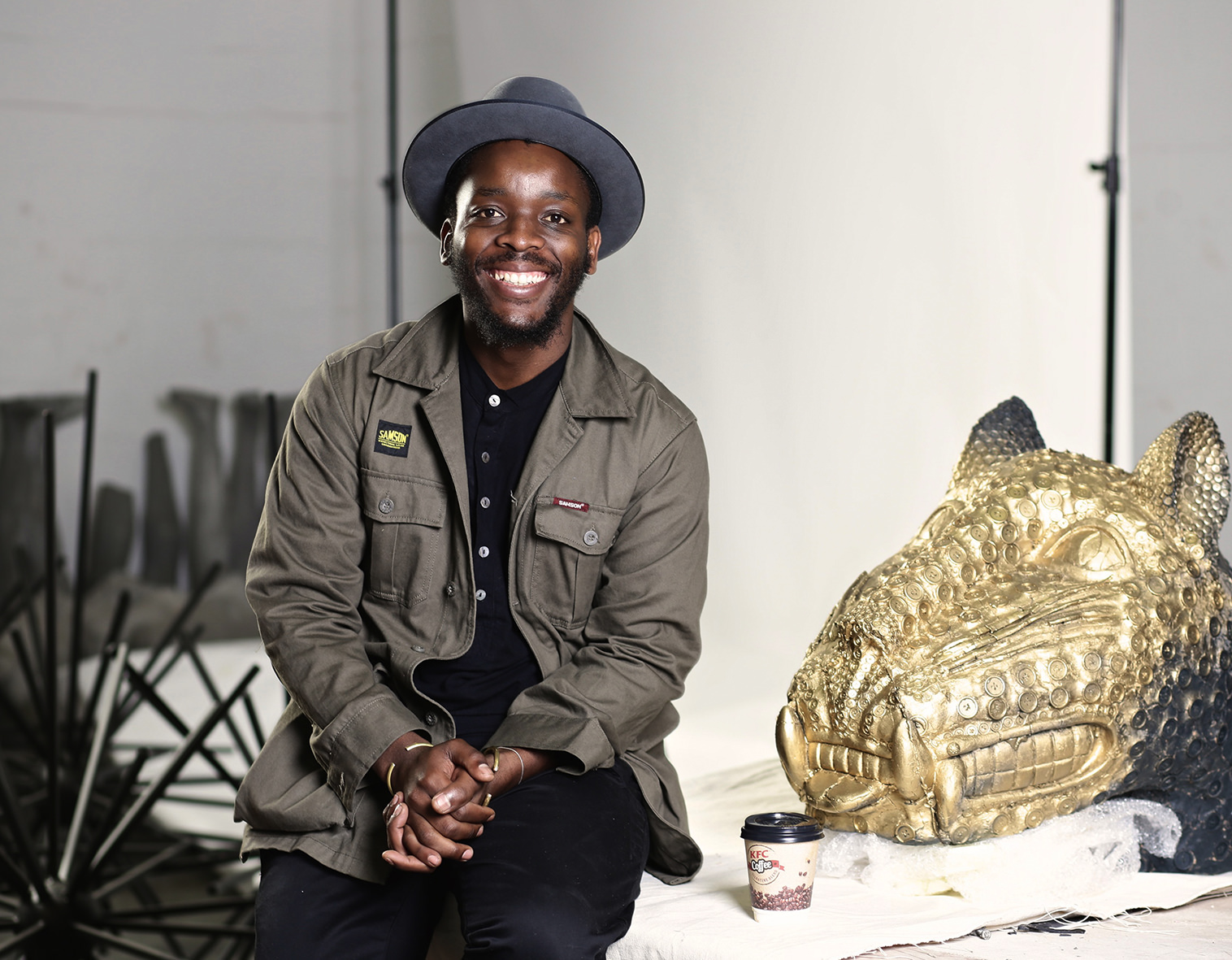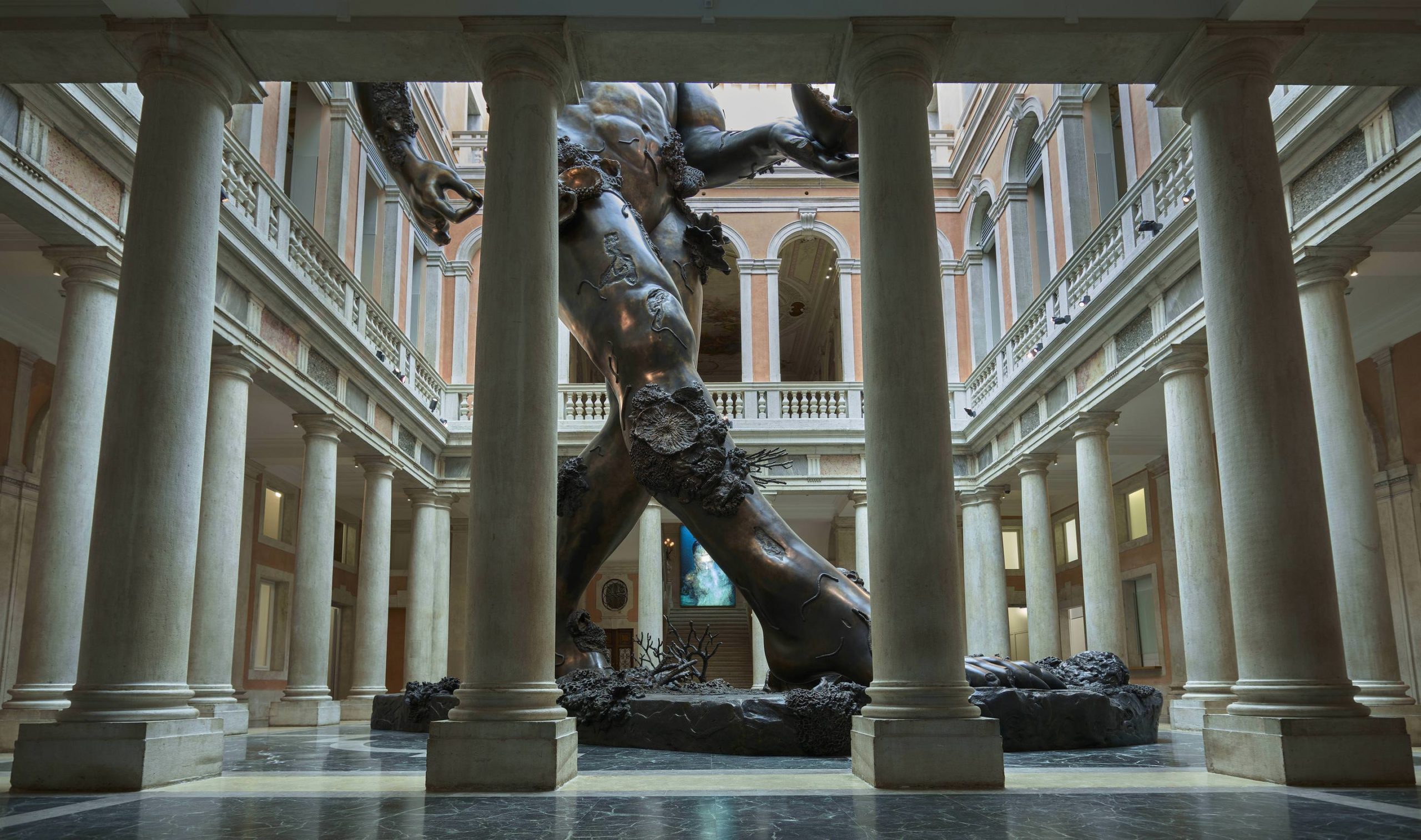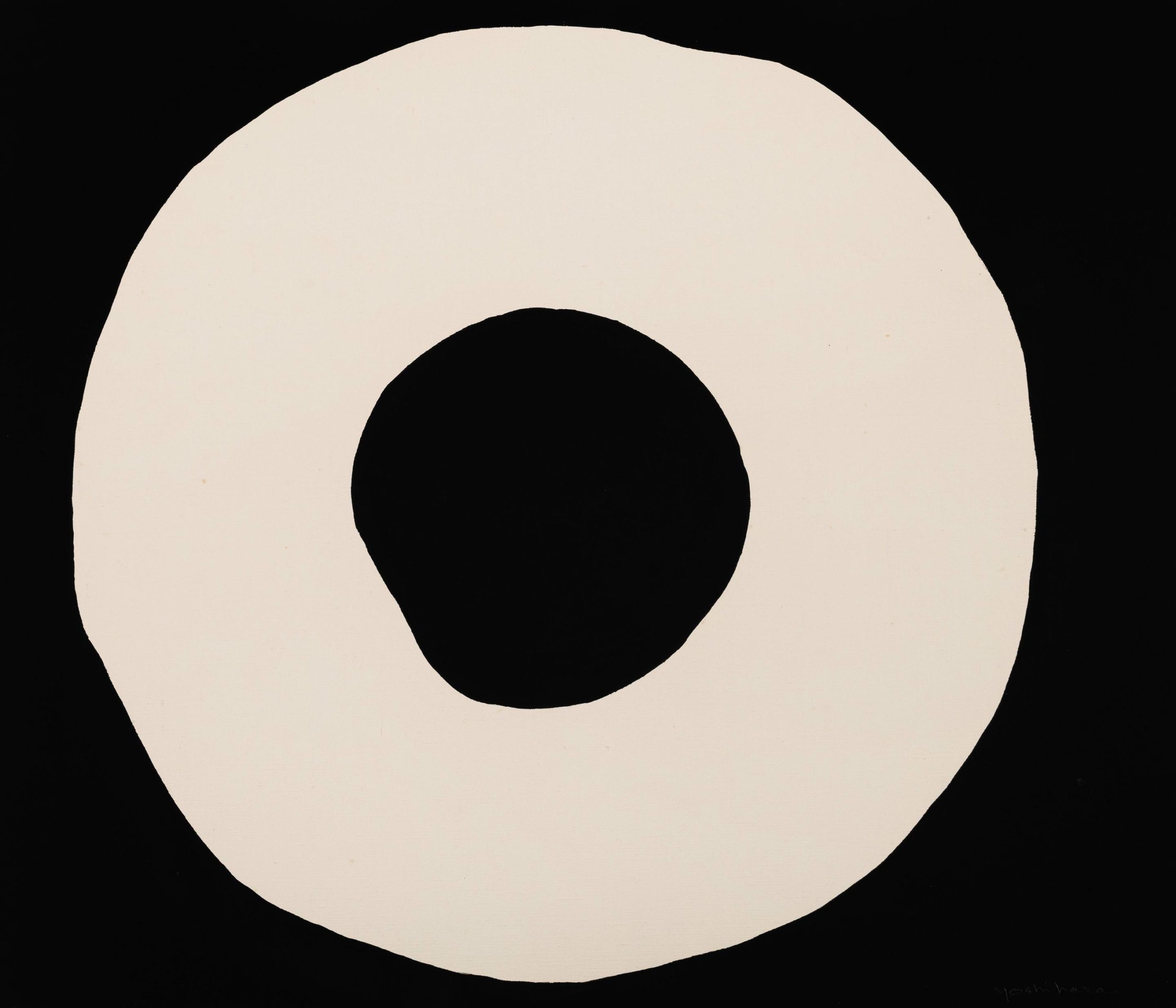Every day, Mohau Modisakeng lights a candle and invites spirits of the past to guide him. The South African artist, who represented his country at the 57th Venice Biennale in 2017, sees himself as a connector between this world and the realm of dreams.
By turning the camera on himself, Modisakeng uses his body to give a voice to those who have been made invisible. He takes control of how black bodies are represented in a way his ancestors never could. Making the personal political, the artist takes on the weighted history of South Africans.
This March, Modisakeng will put on a three-act performance that will result in a series of new work to show in South Africa, the United States, and the Netherlands this fall. This year, he’s also working on a commissioned monument in Europe of the South African struggle.
Whitewall spoke with Modisakeng about devoting his practice to the shared experience.
WHITEWALL: You’ve said that you were recognized from a young age for your talent in drawing. Was art and creativity something that always came naturally to you?
MOHAU MODISAKENG: I believe that my ability to draw and paint became apparent to those around me from a young age. My parents certainly knew that I had some talent, and they made it a point to support me.
My father, in particular, would always come back home from work with a stack of sketchbooks and a bundle of pencils and pens wrapped in a rubber band. I would return from school to find new stationery, and that kept me busy in the evenings.
WW: You studied sculpture in school before moving into photography and film. How do you think your early training in sculpture has informed your practice?
MM: I studied sculpture under Jane Alexander, one of South Africa’s most renowned sculptors, who mentored me through a very difficult time. It was because of the relationship I had with her that I gravitated toward sculpture.
After graduating from art school, however, I quickly realized that I could not practically pursue a career as a sculptor, especially not coming from a disadvantaged background where a studio-based practice was a luxury I could not afford at the time.
The decision was to concentrate on my other strengths, and photography, which I could practice even with limited resources.
WW: How do you use your work to give a voice and expression to bodies that have been made invisible throughout history?
MM: My self-portrait is a gesture of sacrifice on some level. Sacrifice of my face, my body, and even my name. To photograph others is an easy job because the artist remains anonymous; when we gaze at the photograph, we can make assumptions about what the photographer was seeing and feeling, but we cannot see through his eyes, what emotions they convey, we cannot see the condition of his body, how frail or strong it is, we cannot see the tension and awkwardness we can often see in the subject.
In my practice, I am the artist as well as the subject. I inhabit the image, bare and vulnerable. I think of the early daguerreotypes depicting black subjects who at first glance seem afraid. As outsiders peering in, we can always read into their emotional state in ways we cannot empathize with the photography hidden safely behind the lens.
To insert myself in the images I make is to reclaim and reconstitute the image of blackness, not as a mere subject of some else’s gaze. Through visualizing my own blackness, I offer an alternative to the way black subjects have been historically perceived. In my photographs I am in control of how I want the viewer to relate to me, and therefore I become autonomous, in control in ways that my ancestors never were. In this way, I am seen, so that they, too, may be seen, anew.
WW: You’ve said that as an artist you feel a responsibility to tell the experience of life in South Africa and shine a light on the violent history of apartheid and colonialism that today goes ignored. Does that ever weigh heavily on you?
MM: The history of South Africa is a weighted one. I feel that it is more so now in the postapartheid era than at any point in history, because in the past we could pinpoint the cause of our burdens. Today our anguish is displaced, carried squarely on our shoulders.
This weight is felt almost entirely by black South Africans who were coerced into a sort of social contract that demanded that they forgive and forget the past; to erase the memory of centuries of dispossession, indentured labor, institutionalized racism, political violence, and the deep psychological wounds caused by their white counterparts.
When in the past black South Africans knew and understood that their lives were made unbearable by systems that sought to destroy black communities and benefit Europeans, today black South Africans are told they have themselves to blame because when they were given a chance, they ran the country down with greed and corruption.
When in the past there was hope that there would someday be a time of reckoning where black people would finally be able to lay their burdens down once and for all, today the pain and anguish of the past is closely returning as the sedative of Mandela’s promises and the myth of a rainbow nation are beginning to wear off. Worsening unemployment, increasing social and economic equality, and political corruption act as painful reminders of the past, threatening to disrupt the balance of power between the privileged and the poor masses sustained in the new South Africa.
These are the realities that many South Africans have to grapple with; these are the anxieties that weigh heavy on ordinary black men and women who on a daily basis struggle to make a decent living, to support their families and live a dignified existence.
In my culture, we are told that one cannot know where they are headed if they do not know where they are coming from. So even having inherited such a dark and violent history, one has to look back and reflect in order to know which direction to take moving into the future. In a country where the memory of the past is ignored and erased, it is the artist’s job to sustain that memory, not matter how heavy it may be.
WW: At the same time, your work is quite personal, using your own autobiography, visions, and dreams. Do you ever feel vulnerable when presenting a work that is particularly personal?
MM: I believe that the personal is political. Dedicating my practice to making work that draws from my lived experiences is cathartic for me. By reflecting on my biography as a black youth is South Africa, I am in essence reflecting on the story of other South Africans who may share the same history and background. In this way, my work is not only cathartic to me alone, but represents a point of healing and coming to terms for other black bodies
WW: We saw an interview you gave where you said that every day you invite certain figures that have lived before you into your days. Do you try to imbue your work with their presence as well? How do you keep yourself open to that spiritually?
MM: Every day I light a candle and burn imphepho in order to invite and welcome the spirits that guide me through my days. I kneel and call them by name as I perform my daily rituals to show my gratitude for their protection.
The process is not very different from how I approach my work. I commune with my ancestors throughout the process, from when I first conceive of an idea, to when I am meditating and researching, to executing, to ultimately sharing the result with the audience.
I think of myself as a conduit, a sort of medium; a bridge between this and the world of prophecies, divinations, and dreams. As such, I always strive to be in tune with the realm of the unseen. In return, that world reveals itself to me. So I do not necessarily “imbue” my work with their presence because they are already present, omnipresent even. My job as an artist is to merely keep the portals into their world clear and open so that they may come through into this world. Like a conjuring









